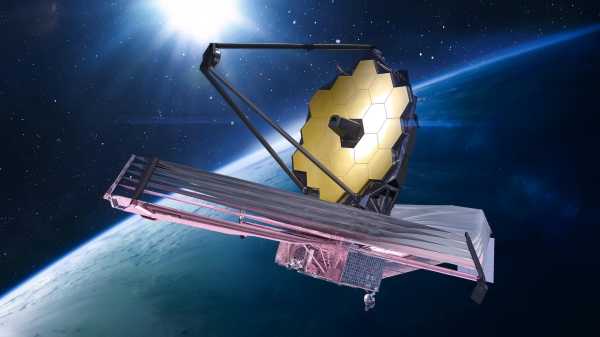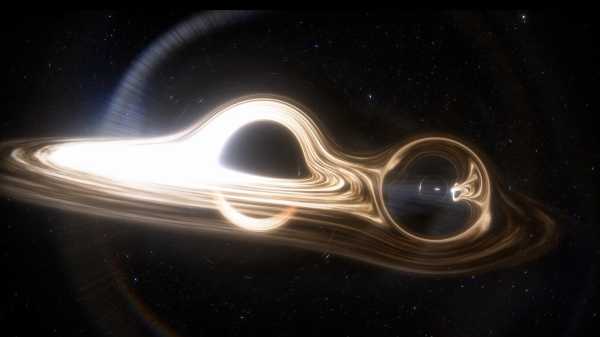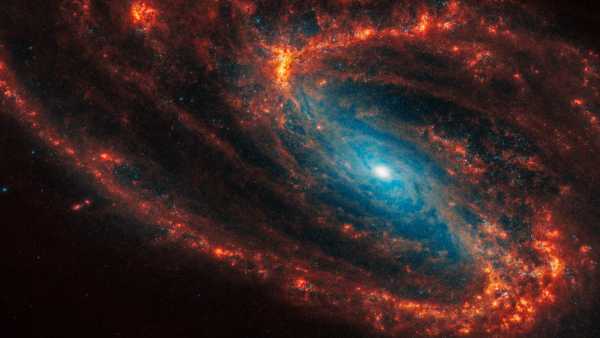
An illustration of a nova exploding after a white dwarf has sucked too much material from its more massive stellar partner. (Image credit: Gemini International Observatory/NOIRLab/NSF/AURA/M. Garlick, M. Zamani)
Breakthrough observations of a repeating explosion in space, the repeating nova LMCN 1968-12a, show that it is the hottest burst of its kind ever recorded.
Located in the Large Magellanic Cloud, a nearby satellite galaxy of the Milky Way, LMCN 1968-12a is the first repeating nova studied outside our galaxy in near-infrared light.
In a study published in the journal Monthly Notices of the Royal Astronomical Society, scientists explained that in addition to its extreme temperatures, this new star also stands out for its extremely powerful eruption with unique chemical characteristics that are significantly different from those observed in our galaxy.
Seeing dead stars
When a white dwarf, which is the remnant core of a collapsed star, is in close orbit around another star, it can extract material from that star, causing some pretty dramatic astronomical events. One of these is called a nova, which is Latin for “new.”
The phenomenon causes a bright flash in the sky, giving the appearance of a new star, and lasts for weeks or months before gradually fading. When the dust clears, the original stars remain in place (unlike a supernova, which occurs when a star is completely destroyed).
In a binary system, when a white dwarf steals gas from its younger partner, the accumulated material forms an accretion disk around the white dwarf. The material swirls in the disk, and when it reaches the surface of the white dwarf and accumulates, the pressure and temperature increase enough to trigger the rapid burning of hydrogen into heavier elements. This is called runaway fusion.
This reaction results in a high-energy explosion that ejects a huge amount of material from the surface of the white dwarf, thus forming a new star. The new star is called “recurrent” when the white dwarf continues to take more material from its companion, causing similar short-term bursts of energy at regular intervals of months to years.
There are not many repeating novae found in our galaxy, and even fewer outside the Milky Way. Studying novae helps astronomers better understand the dynamics of binary systems and the influence of the environment on these eruptions.
LMCN 1968-12a was the first recurring nova discovered outside our galaxy. Discovered in 1968, the system consists of a white dwarf and a red subgiant. It erupts every four years, and its eruptions have been systematically observed since 1990.
The most recent eruption occurred in August 2024. Following the initial observations, the Magellan Baade and Gemini South telescopes — both located in Chile — made follow-up observations of LMCN 1968-12a in the near-infrared nine and 22 days after the outburst, respectively. The observations revealed light emitted by various elements that became highly excited during the eruption.
Sourse: www.livescience.com





